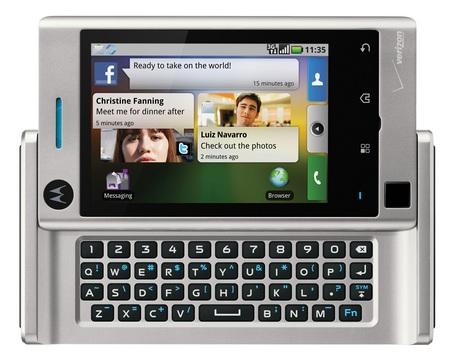
Android hit the market in September 2008 with two major competitors, the businessman's BlackBerry, and the consumer's dream phone, the iPhone. With Apple's product, there is no choice. It's available in one basic, high-end model with different capacities. The BlackBerry, however, comes in all shapes and sizes, and a multitude of price ranges to boot.
Android attempted to be the best of both worlds, tackling the consumer space and offering a modernized operating system with a choice of hardware, manufacturer, and price range. Google has done a decent job at growing their product and spreading it out across several markets, and to date very few have complained about having such a broad choice of devices. But it's that very choice that could tarnish Android's reputation in the long run.
The plethora of high-end devices that are currently offered are some of the best phones that have ever made it to shelves. They feature processors clocked at break-neck speeds, ample storage and memory, display sizes both large and small, excellent cameras for stills and video, and perks like kickstands and crystal clear loud speakers. These are the phones that have certainly attributed the most to Android's popularity.
That said, not every Android device to date has been a high-end work of wonder. The majority of them have actually been mid-range or low-end devices baited with unbelievably low subsidized prices.
While high-end devices like the ThunderBolt, Galaxy S series, or Droid X may cost a good chunk of change more, they offer a consistent, smooth experience. Phones that straddle the line between feature phone and smartphone, are left out of update schedules, tend to run out of memory quickly, and can be ridden with lag and other issues.
The problem is, it's likely that a majority of the customers who end up buying a mid-range or low-end device don't know the difference. They want a Corvette but settle for the Honda Civic due to the much smaller price tag. Initially, they don't see the need for all of the specifications and technical jargon that the salesman keeps throwing at them. Chances are, they walk out of the store filled with excitement over their shiny, new phone. But they come back the day after their return period expires, now more educated and ready for that 'Vette.
I worked in wireless sales as a consultant for a while, and I saw it happen all too often.
Don't get me wrong, it's good having a choice. Not everyone needs a Corvette. But it's hard to enjoy that precious, expensive data that you pay for each month when your phone lags and locks up when you browse the Internet or launch the Facebook for Android app.
As an example, both my mother and stepfather had the Droid Eris. When it was running Android 2.1, it was decent and they had few problems. When it was updated to 2.2, the phone lagged so much it was nearly unusable. When upgrade time came, both were begging to get away from Android, convinced that it was the operating system itself, not the mediocre hardware. They've since moved on to high-end Android devices that you cannot pry from their hands. They now love their phones and enjoy every feature each has to offer.
The current line of mid-range Android devices are more like "suped up" featurephones. They are primarily made of plastic, have under-clocked processors, and poor, low quality displays. The inconsistent experience they give is undoubtedly taking its toll on Android's reputation and customers, especially those that don't want to pay for a $300 smartphone on-contract.
In another year's time, I expect things to change a bit. Low-end phones will take the place of the current mid-range devices. Mid-range phones will step into the shoes of the current high-end phones, while the technology in high-end handsets will continue to excel to quad-core processors and (hopefully) better battery life.
What do you guys and gals think? Do low-end and mid-range handsets give Android a bad rep? Do they play a major role in Android's fragmentation woes?